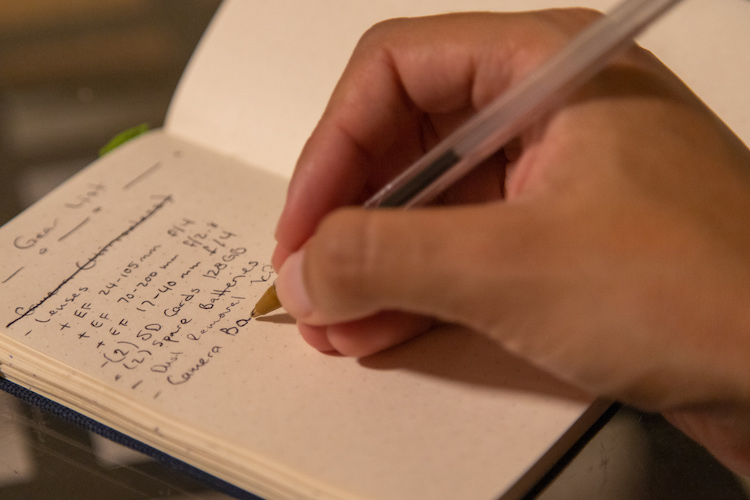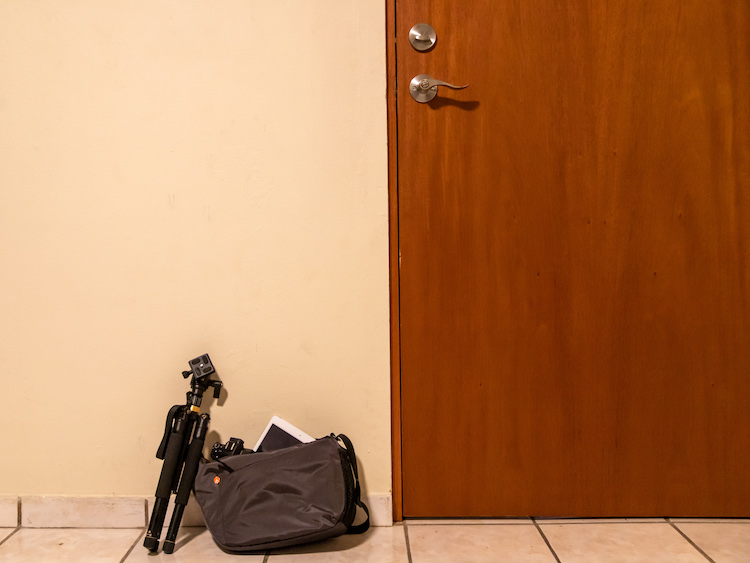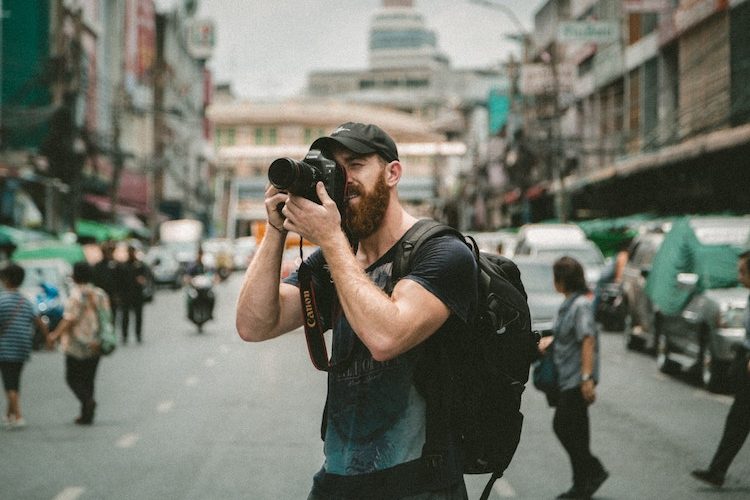As much as we like to photograph everything and anything while in another country, there are certain rules that should be followed so that we can enjoy photographing our journey. Here are five do’s and five don’t’s to keep in mind while traveling abroad.

Photography Gear | Isaac Leon
5 Do’s
1. Do your research before traveling
There is nothing worse than getting to a destination and sitting in your hotel room while you research what to do.
That’s why it’s important to do your research before arriving at your destination. Figure out all of the attractions that you want to visit and think of ideas on how you’d like to capture them.
Don’t be afraid to use the Google and Google Maps to get ideas of the area that you’ll be traveling to. Also, if you see a good picture that you really like, don’t be afraid to imitate it. Just be sure to add something of your own.
Keep in mind that a lot of museums and art museums don’t allow cameras inside the premises.
2. Make a list of all the gear you’re going to bring

List of Photography Gear | Isaac Leon
Now that you have done your research on the place that you’re visiting, it’s time to make a list of all the photography gear you’re going to bring. The gear you need will depend on the types of photographs that you intend to take, but be mindful that bringing too much gear can get heavy.
If you want to travel light and comfortable try to have the following:
- Camera: preferably a mirrorless camera, as they are light and compact for traveling. DSLR cameras tend to be bulkier and a bit heavier than mirrorless cameras.
- No more than two lenses: I recommend bringing one wide-angle zoom lens (preferably from 18mm to 55mm) and one telephoto zoom lens (preferably from 55mm to 200mm). That way you’ll be prepared for different types of shots, from very wide angles to close-up portraits, with your zoom lens.
- A shoulder bag or small camera backpack: There are tons of styles of camera bags. Choosing the right one can be a hassle, but I recommend a shoulder bag where you can fit your camera with an attached lens, a spare lens, and that allows you to fit a small computer or iPad. It’s also important to have room for extra stuff like batteries, memory cards, and a lens cleaning kit.
- A travel tripod: There will be a lot of times where you’ll be in low light situations and your shutter speed will be slow. Bringing the extra support of a tripod can make shaky pictures loot stunning and sharp. Just remember that anything below 1/60th of a second will appear with some form of shake and to use the timer feature on your camera to minimize shake from the shutter release.
If you want to bring gear for a more professional photography experience, consider bringing a range of different prime lenses, artificial light (such as strobes and speedlight), light stands, receivers, batteries, and a heavy duty case to carry all of that equipment. Manfrotto came out with the Reloader TOUGH-55 line of heavy duty cases that are great for carrying lots of gear.
3. Create different photography themes
Creating a photography theme before traveling will be helpful when you have to create professional images and establish a social media presence. However, before doing so, you need to establish some guidelines for your photography theme.
- Time – You want to select a time of the day for the images you want to take, because as the day goes on there are different types of light. Towards the morning and evening, natural light will always have an orange glow. The morning and evening are the best times for taking photographs, as your image will be well lit, but you will not have hard shadows. Around midday there will be a cooler color with harder shadows, unless is overcast, in which case your image will appear gray with little to no shadow.
- Theme – What exactly you want to photograph? Here you will choose a subject that you will be photographing. For instance, if you are staying in Cuba, you could have a theme about old cars or coastal images.
- Technique– This is probably the most important aspect because technique is where you will show the style you want to photograph. You could focus on close-ups, landscapes, aerial shots, portraits, street, architecture, and many more techniques.
4. Make a photography shot list
Now that you have selected the theme that you want to carry throughout your journey, it’s time to make a photography shot list. This shot list will help you to remember all of the different scenarios that you want to photograph throughout your journey.
I divide my shot list into five categories: city/street, historic site/landmarks, landscapes, wildlife, and people/portraits. You can add more categories to your liking, for example food, vehicles, seascapes or coastal images. Just be sure to take note of everything that you want to photograph.
5. Always ask for permission
It is so important to treat others the way that you would want to be treated when photographing people on the street.
Not everyone enjoys strangers taking pictures of them, so it’s always best to ask for permission. The majority of the time people will say yes! Being open about what you intend to use the photograph for can help you get the shot that you want.
5 Dont’s
1. Never leave your gear unattended

Camera Bag | Isaac Leon
Your camera equipment isn’t just some electronic device that helps you capture amazing photos and scenery. That equipment is captures your adventure and your story, and that is worth more than anything in the world.
That’s why you cannot leave your gear unattended anywhere, not even in your hotel room. A lot of photographers that I follow on Instagram have had their cameras stolen when they least expected it or in places that they thought were “secure”.
Just as a precaution, is good to bring your gear with you, at least your camera and lenses. As an extra precaution, back-up all of your images either to the cloud or a hard-drive every night before going to bed. That way if something does happen, you will still have some of your work saved.
2. Avoid photographing military and police
This cannot be more obvious; photographing police officers and military personnel is a big no. You don’t know the laws and rules that apply in each country, and doing so might be illegal.
Photographers in the past have been convicted of espionage for having professional camera equipment or photographing, so if you want to keep your photography gear and not have it confiscated, it’s best to avoid photographing police or military personnel.
3. Don’t be a “tourist”
We all know who I’m talking about: the person with the large camera hanging from their neck, taking pictures with no consideration of the outcome of the image whatsoever.
You don’t want to be that type of person, as your goal is to get images that have different perspectives, something that people are not used to seeing. Try to avoid taking those boring ‘tourist” pictures and instead take pictures the way a professional photographer would.
4. Don’t just settle for the first photo
A lot of beginner photographers just take one picture of a location and leave, but what you really want to do is take various pictures from different angles. Try getting different images of the same place. For instance, if it’s cloudy outside, try to wait for the sun. If there are a lot of people walking by, try waiting a little longer to get a cleaner shot.
Is always good to think outside the box, and don’t just settle for the basics. You might be surprised by the outcome if you wait for the right moment. People enjoy images from angles that are unusual, and having multiple images could improve the storytelling of your travels.
5. Don’t leave your group or tour
If you want to have extra security with your equipment, it’s best to stay in a group. This will make it harder for a thief to steal your gear.
It’s tempting to go out on your own and photograph in a more relaxed setting without someone hurrying you, but having that extra security of being in a group will help to prevent you from losing your equipment or having it stolen.
Edited by Brianne Recker.

